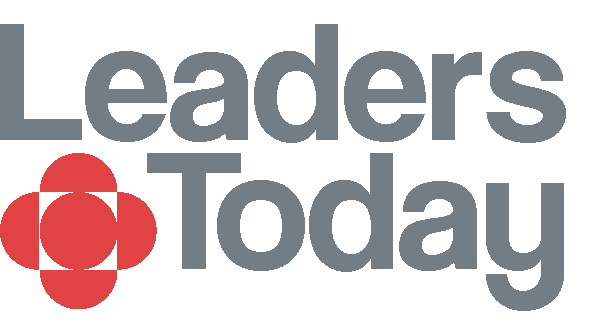The Six Stages of Coaching Culture Evolution
This is a subtitle for your new post
Coaching has become one of the most powerful levers for leadership development and organizational performance. Yet, despite growing enthusiasm, many organizations struggle to make it stick. A few managers may be trained, a handful of coachees may benefit, but the ripple fades. The question remains: how do you move from isolated initiatives to a thriving coaching culture that transforms how people lead, collaborate, and learn?
At Leaders Today, we’ve spent years helping organizations make use of coaching. Through our framework — The Coaching Edge — we designed a method to guide teams in building the ecosystem where coaching doesn’t just exist but truly flourishes.
Below is a roadmap outlining the
six stages of coaching culture evolution — from Newcomers to Coaching Strategists.
Understanding where you are today is the first step to choosing the right next one.
1. Newcomers – The Seeds of Awareness
At this early stage, coaching is recognized but not yet practiced. Leaders may have heard of its benefits, or a few individuals may have experienced coaching personally, but it hasn’t yet found its place in everyday life.
Typical signs include:
- Coaching appears in HR or leadership strategies but isn’t yet operational.
- Conversations remain directive and task-focused.
- Curiosity exists, but confidence is low.
The Opportunity:
Create awareness and spark curiosity. Offer leaders a chance to experience coaching rather than just hear about it. Host interactive sessions or short introductions that link coaching directly to real leadership challenges.
2. Explorers – Experimenting with Coaching
Here, curiosity turns into action. The organization begins to test the waters — running pilot programs, offering leadership training, or hiring external coaches.
Patterns you’ll notice:
- A few leaders use coaching tools informally.
- Small-scale coaching initiatives emerge in different parts of the organization.
- Early wins create excitement but remain isolated.
The Opportunity:
Capture what’s working. Celebrate small successes and gather lessons learned. Create simple reflection tools or debriefs to help leaders understand what makes coaching impactful. At this stage, learning and sharing stories are your best growth engines.
3. Enablers – Building Alignment and Structure
Momentum grows. Coaching has proven its value, and HR or Learning & Development teams begin to coordinate activities. You start to see a shift from individual enthusiasm to collective effort.
You might notice:
- HR formalizes coach training or mentoring programs.
- Leaders are encouraged to use coaching in performance and development conversations.
- Internal coaches may be appointed or trained.
The Opportunity:
Build alignment. Develop a shared language around what coaching means in your organization. Define purpose, outcomes, and quality standards. Begin to measure progress — participation rates, feedback, and visible changes in communication.
4. Champions – Gaining Momentum and Visibility
At this point, coaching is moving beyond HR. Enthusiastic leaders and teams are visibly modeling coaching behaviors. Coaching becomes “how we do things here.”
What’s happening now:
- Positive stories circulate informally across departments.
- Coaching appears in leadership competencies and development plans.
- Teams start using coaching techniques during meetings and problem-solving sessions.
The Opportunity:
Make it visible. Share stories internally — through newsletters, town halls, or short videos. Recognize the leaders who embody this new mindset. Their enthusiasm inspires others and gives legitimacy to the movement.
5. Culture Shapers – Living the Values
At this stage, coaching has become part of daily life. You can see it in how people interact, give feedback, and collaborate. Leaders model empathy, curiosity, and accountability — and others follow.
Common signs include:
- Coaching skills are embedded in leadership development programs.
- Team dynamics reflect openness, trust, and ownership.
- Internal coaches form communities of practice to sustain quality and learning.
The Opportunity:
Sustain and refresh. Provide continuous learning and peer support for coaches and leaders. Align HR processes — recruitment, appraisal, promotion — with coaching values. The focus now is on consistency and renewal.
6. Coaching Strategists – Coaching as a Strategic Lever
Few organizations reach this level — but those that do experience remarkable results. Coaching is no longer just a skill or a program; it’s a strategic capability woven into the organization’s DNA.
You’ll see:
- Coaching integrated into executive decision-making and innovation processes.
- Leaders modeling openness and reflective dialogue at the highest levels.
- Systems and culture reinforcing each other to sustain growth and adaptability.
The Opportunity:
Leverage your maturity. Use coaching as a driver of innovation, engagement, and change readiness. Strategists continuously evolve their culture by staying curious, adaptive, and intentional.
Moving from Awareness to Integration
Wherever your organization is today — whether you’re a Newcomer just discovering coaching or a Champion expanding its reach — the key is to move forward with clarity and purpose.
At
Leaders Today, our
Coaching Edge Framework provides a structured yet flexible roadmap that helps organizations evolve their coaching culture sustainably.
The process unfolds in four adaptive phases:
- Assess – Understand your current culture through diagnostics, interviews, and insight.
- Pilot – Test what works in your context and refine through experimentation.
- Scale-Up – Train leaders, expand internal networks, and communicate success.
- Sustain – Embed coaching in systems and leadership routines for long-term impact.
Start Where You Are
Every organization’s journey is unique. The most successful ones are those that meet themselves where they are — with honesty and curiosity — and move forward with intention.
If you’d like to explore how The Coaching Edge could help your organization build a thriving coaching culture, we’d love to start the conversation.








